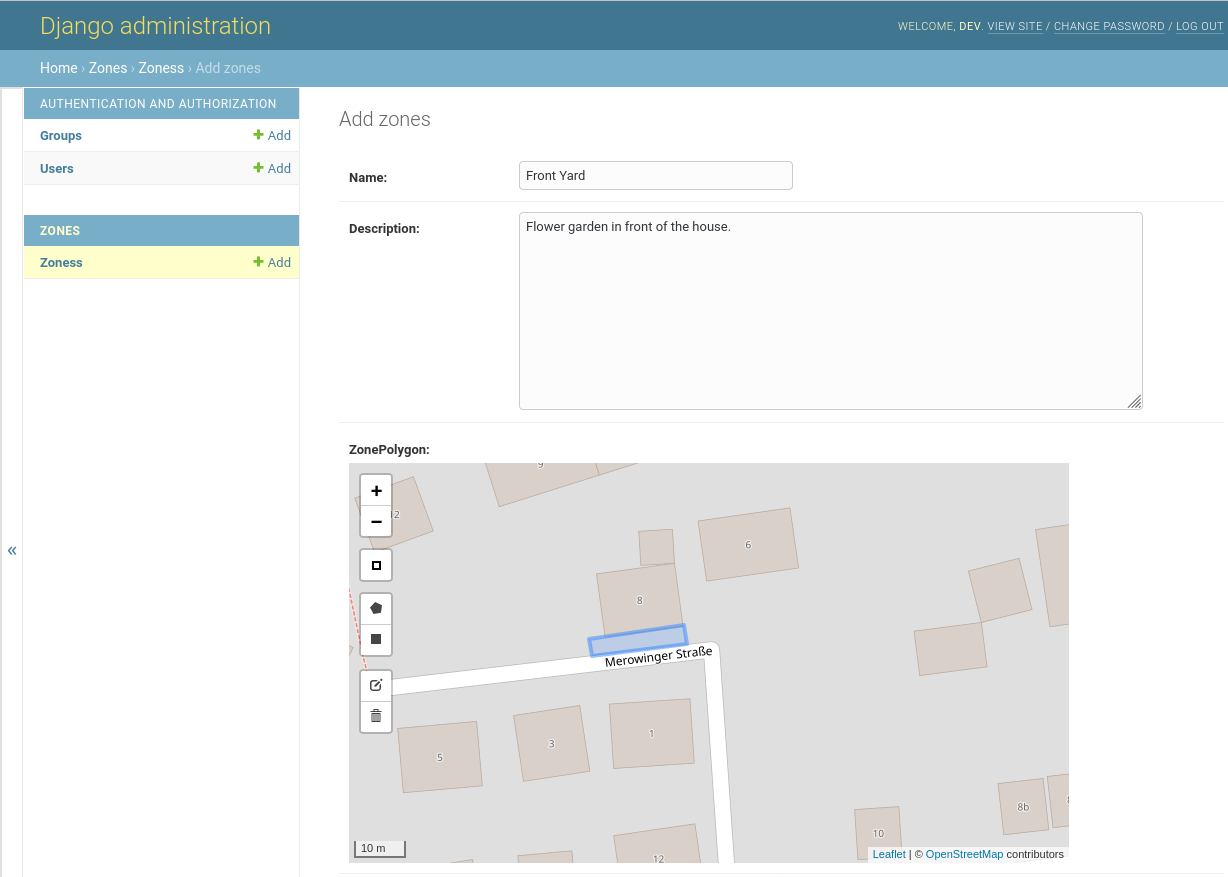I've started work on the management software.
Since it is intended to run on a Raspberry Pi, and it deals with wet soil, I decided to call it "Mud-Pi." I could have called it "Mud-Py," but I didn't think of that until after I'd made the GitHub repository.
Edited 2012-03-06: I've renamed it to Mud-Py afterall. The link to the repository is corrected.
Oh, well.
I fiddled around with Django, and made some of the base classes. With Django, that also defines the database tables and their columns.
It turns out that it is almost stupidly simple to include maps of the real world in your Django "Admin" pages.
I tried the standard map display, then tried the OpenStreetMaps stuff. In the end I settled on using Leaflet. It is almost trivial to switch your code between the three options.

Getting that setup involved less code than there is text in this log entry.
I've begun setting up all the models.
There will be models for zones, control nodes, control node data (battery level,) sensors, and sensor data.
Control nodes are assigned to the zones.
Sensors are assigned to zones (for grouping) and to control nodes (for monitoring.)
I didn't get as far as I planned to this evening. I unexpectedly received the new test leads for my old Simpson 467 multimeter, and spent some time writing a blog post about how I managed to own a multimeter for 30 years without ever using it.
 Joseph Eoff
Joseph Eoff
Discussions
Become a Hackaday.io Member
Create an account to leave a comment. Already have an account? Log In.